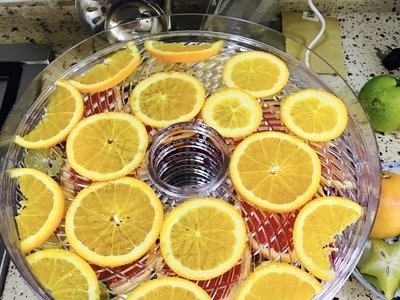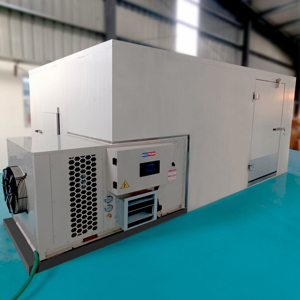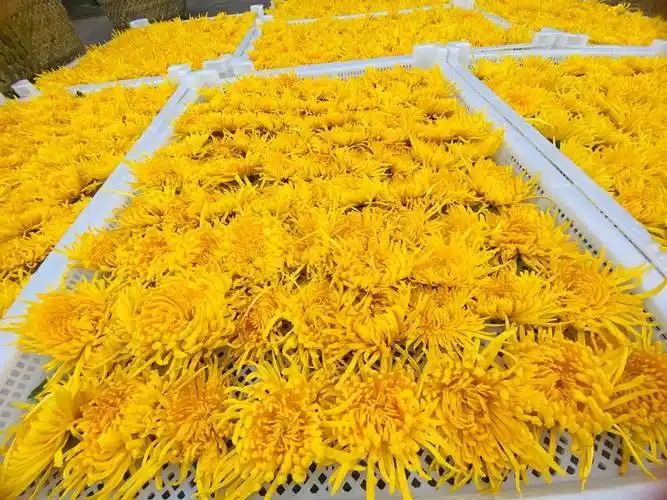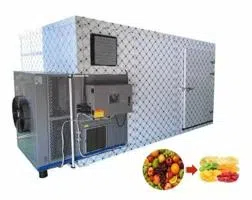
Content Menu
● Introduction
● Understanding Food Dryers
>> What is a Ventless Heat Pump Dryer?
>> What is a Condenser Dryer?
● Comparing Ventless Heat Pump Dryers and Condenser Dryers
>> 1. Energy Efficiency
>> 2. Drying Time
>> 3. Maintenance Requirements
>> 4. Initial Investment
>> 5. Environmental Impact
● Advantages of Ventless Heat Pump Dryers
● Disadvantages of Ventless Heat Pump Dryers
● Advantages of Condenser Dryers
● Disadvantages of Condenser Dryers
● Choosing the Right Dryer for Your Needs
>> Product Type
>> Production Volume
>> Budget Considerations
>> Space Availability
● Conclusion
● Frequently Asked Questions (FAQs)
>> 1. What are the main differences between ventless heat pump dryers and condenser dryers?
>> 2. Which type of dryer is more energy-efficient?
>> 3. How often do I need to maintain each type of dryer?
>> 4. Can I dry all types of foods using these machines?
>> 5. What is the initial investment difference between the two types?
Introduction
In the food processing industry, drying is a crucial method for preserving food products, enhancing flavors, and extending shelf life. With the increasing demand for high-quality dried foods, manufacturers are turning to advanced drying technologies. Among these technologies, ventless heat pump dryers and condenser dryers have gained significant attention. This article will explore the differences between these two types of food dryers, their operational mechanisms, advantages, disadvantages, and maintenance considerations.

Understanding Food Dryers
Food dryers are essential equipment in various industries, including agriculture, snacks, and herbs. They remove moisture from food items to prevent spoilage and maintain nutritional value. The two primary types of dryers used in food processing are ventless heat pump dryers and condenser dryers.
What is a Ventless Heat Pump Dryer?
A ventless heat pump dryer uses a closed-loop system to dry food products. It operates by drawing in ambient air, heating it using a heat pump, and then circulating it through the food items. The moisture-laden air is then cooled down to condense the water vapor, which is collected and drained away. This process allows for efficient drying without the need for external ventilation.
What is a Condenser Dryer?
A condenser dryer also uses a closed-loop system but operates differently. It heats air and circulates it through the food items. The moisture in the air is then condensed into water when it passes through a cooling coil. Unlike heat pump dryers, condenser dryers may require some form of ventilation to expel excess heat generated during the drying process.
Comparing Ventless Heat Pump Dryers and Condenser Dryers
When choosing between ventless heat pump dryers and condenser dryers for food processing, several factors come into play. Below are key points of comparison.
1. Energy Efficiency
Ventless Heat Pump Dryers:
- Highly energy-efficient due to their ability to recycle heat.
- Lower energy consumption compared to traditional drying methods.
Condenser Dryers:
- Generally consume more energy as they continuously draw in new air.
- Less efficient than heat pump models.
2. Drying Time
Ventless Heat Pump Dryers:
- May have longer drying times due to lower operating temperatures.
- Ideal for delicate foods that require gentle drying.
Condenser Dryers:
- Typically faster drying times due to higher temperatures.
- Suitable for robust food items that can withstand more intense heat.
3. Maintenance Requirements
Ventless Heat Pump Dryers:
- Require regular cleaning of filters and condensate tanks.
- Less frequent maintenance overall compared to condenser dryers.
Condenser Dryers:
- Need regular cleaning of lint traps and condensate tanks.
- More prone to issues if not maintained properly.
4. Initial Investment
Ventless Heat Pump Dryers:
- Higher initial investment due to advanced technology.
- Long-term savings on energy costs can offset initial expenses.
Condenser Dryers:
- Generally lower upfront costs.
- Potentially higher operational costs due to energy consumption.

5. Environmental Impact
Ventless Heat Pump Dryers:
- More environmentally friendly due to lower energy usage.
- Reduced carbon footprint compared to traditional methods.
Condenser Dryers:
- Higher energy consumption can lead to increased environmental impact.
- May require additional cooling systems in larger operations.
Advantages of Ventless Heat Pump Dryers
1. Energy Efficiency: As mentioned earlier, heat pump dryers are designed to recycle energy effectively, making them an environmentally friendly option.
2. Versatility: They can handle a variety of food items, including fruits, vegetables, herbs, and meats without compromising quality.
3. Gentle Drying Process: The lower temperatures used in heat pump drying help preserve the nutritional content and flavor of delicate foods.
4. Reduced Noise Levels: Ventless models tend to operate more quietly than traditional condenser dryers.
5. Compact Design: These dryers often have a smaller footprint, making them suitable for facilities with limited space.
6. Consistent Results: The controlled environment within a heat pump dryer leads to uniform drying results across batches of food products.
7. Less Risk of Over-Drying: The precise temperature control minimizes the risk of over-drying delicate foods that can lose flavor and nutrients if exposed to excessive heat for too long.
8. User-Friendly Operation: Many modern ventless heat pump dryers come equipped with intuitive controls and digital displays, making them easy for operators to use effectively.
9. Lower Operating Temperatures: This feature not only conserves energy but also helps maintain the integrity of sensitive ingredients like herbs or fruits that may degrade at higher temperatures.
10. Longer Equipment Lifespan: The reduced wear and tear on components due to lower operating temperatures can lead to longer-lasting equipment compared to higher-temperature systems.
Disadvantages of Ventless Heat Pump Dryers
1. Longer Drying Times: While they are efficient, they may take longer than condenser models for certain products.
2. Higher Initial Cost: The advanced technology can result in a higher purchase price compared to traditional systems.
3. Limited Capacity: Some models may have limitations on the volume of food they can process at one time compared to larger condenser units designed for bulk processing.
4. Complexity in Repair: If issues arise with heat pumps or electronic components, repairs may require specialized knowledge or service technicians familiar with this technology.
Advantages of Condenser Dryers
1. Faster Processing Times: Ideal for large-scale operations where speed is essential.
2. Lower Initial Costs: More affordable upfront investment compared to heat pump models.
3. Simplicity: Easier installation with fewer technical requirements than heat pump systems.
4. High Capacity Options Available: Many condenser dryers are designed with larger capacities suitable for commercial applications needing high throughput.
5. Robustness: Generally built with simpler mechanical components that can be easier and less costly to repair or replace if needed.
Disadvantages of Condenser Dryers
1. Higher Energy Consumption: Increased operating costs due to higher electricity usage can impact profitability over time for businesses relying on large-scale drying operations.
2. Maintenance Needs: More frequent maintenance required to avoid performance issues; neglecting this can lead to reduced efficiency or breakdowns during critical production periods.
3. Less Versatile Temperature Control: While effective for many applications, they may not provide the same level of temperature control as ventless heat pump systems when handling sensitive products like herbs or certain fruits that require gentler treatment during drying processes.
4. Heat Generation Issues: The excess heat produced by condenser dryers may necessitate additional cooling solutions in facilities where temperature control is crucial for other processes or products being handled simultaneously.
Choosing the Right Dryer for Your Needs
When selecting between ventless heat pump dryers and condenser dryers for your food processing operation, consider the following factors:
Product Type
Different foods require different drying conditions; understanding your product's specific requirements will help you choose the right dryer type effectively:
- For delicate items like herbs or fruits that need gentle handling without losing flavor or nutrients, a ventless heat pump dryer would be ideal.
- For more robust products such as vegetables or meats that can withstand higher temperatures without damage, a condenser dryer may be more appropriate due to its faster processing capabilities.
Production Volume
Evaluate your production needs:
- If you operate on a smaller scale or produce specialty items requiring careful attention during drying processes, investing in a ventless model could provide better results despite longer processing times.
- Conversely, if you run a high-volume operation needing quick turnaround times while maintaining acceptable quality standards across batches produced daily or weekly—condenser units might serve you better.
Budget Considerations
Assess both initial investment costs alongside long-term operational expenses:
- While ventless heat pumps might have higher upfront costs—consider how much you could save on energy bills over time versus traditional methods when calculating total cost-of-ownership (TCO).
- If immediate cash flow constraints exist—condenser units typically offer lower purchase prices but watch out for rising utility costs impacting profitability down the line.
Space Availability
Consider the physical constraints within your facility:
- Ventless designs often occupy less floor space than larger conventional models—making them suitable choices where room is limited.
- Ensure adequate ventilation options exist if opting for traditional condensate systems; otherwise—additional infrastructure investments could arise later on.
Conclusion
In conclusion, both ventless heat pump dryers and condenser dryers have their unique advantages and disadvantages when it comes to food drying applications. Choosing the right type depends on your specific needs regarding energy efficiency, drying time, maintenance requirements, and budget considerations.
For manufacturers looking for OEM services in producing high-quality food drying machines, understanding these differences is crucial for making informed decisions that align with market demands and sustainability goals.
As you consider investing in food drying technology, weigh the pros and cons carefully to determine which dryer best suits your operational needs while ensuring quality preservation of your products.

Frequently Asked Questions (FAQs)
1. What are the main differences between ventless heat pump dryers and condenser dryers?
Ventless heat pump dryers recycle air and use lower temperatures for gentle drying, while condenser dryers use higher temperatures for faster drying but consume more energy.
2. Which type of dryer is more energy-efficient?
Ventless heat pump dryers are generally more energy-efficient as they recycle heat within the system compared to condenser dryers that require continuous air exchange.
3. How often do I need to maintain each type of dryer?
Ventless heat pump dryers require regular cleaning of filters and condensate tanks but generally need less frequent maintenance than condenser dryers which require more regular lint trap cleaning.
4. Can I dry all types of foods using these machines?
Yes, both types can be used for various foods; however, ventless heat pump dryers are better suited for delicate items while condenser dryers work well with robust products that can handle higher temperatures.
5. What is the initial investment difference between the two types?
Ventless heat pump dryers typically have a higher initial cost due to advanced technology compared to condenser dryers which are generally more affordable upfront.












